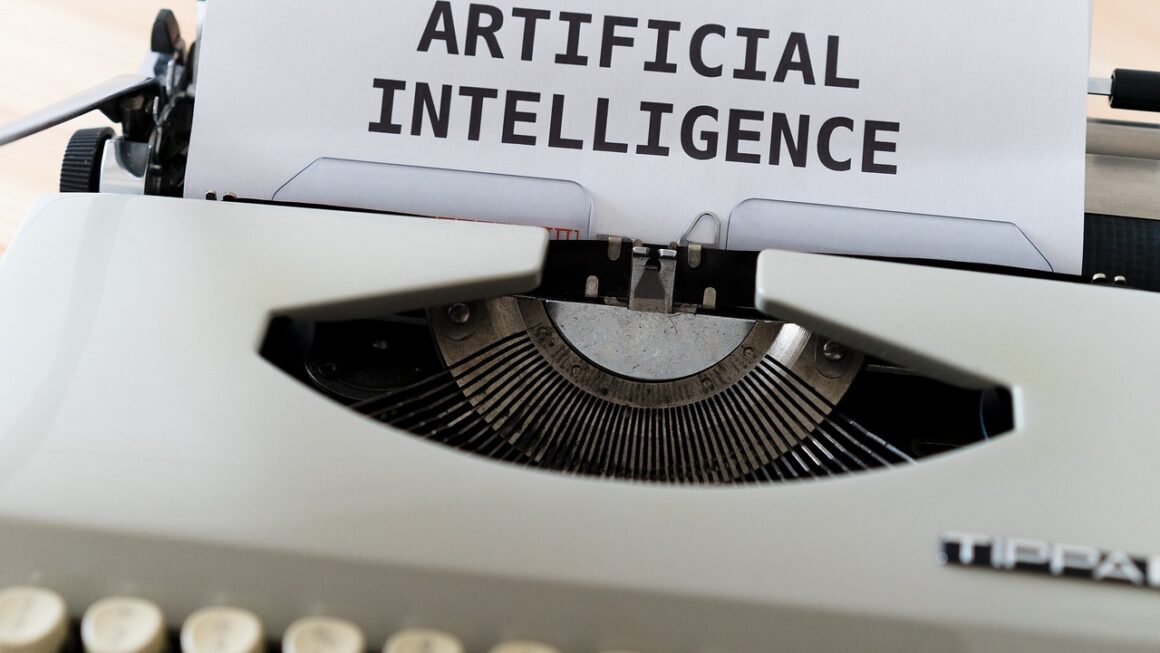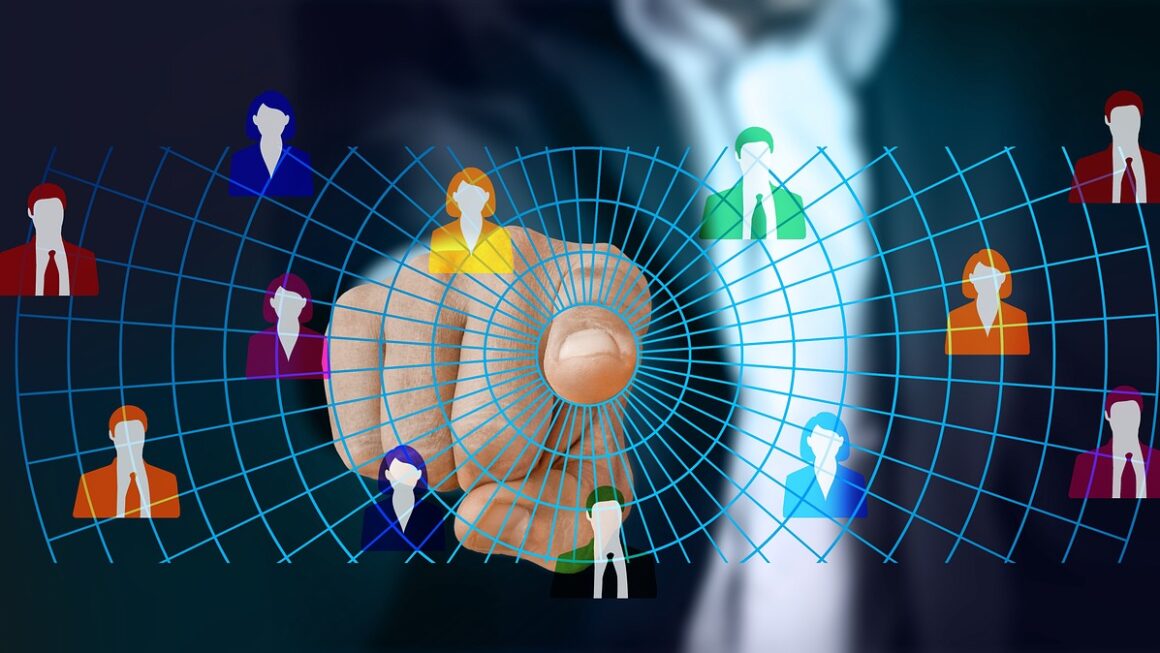Deep learning, a revolutionary subset of artificial intelligence, is reshaping industries and enabling innovations previously confined to science fiction. From self-driving cars that navigate complex terrains to medical diagnoses that rival expert physicians, deep learning algorithms are powering a new era of intelligent systems. This comprehensive guide explores the core concepts, applications, and future trends of deep learning, providing you with a solid understanding of this transformative technology.
What is Deep Learning?
Deep Learning Defined
Deep learning is a type of machine learning that uses artificial neural networks with multiple layers to analyze data and learn complex patterns. These deep neural networks are inspired by the structure and function of the human brain, allowing them to process information in a hierarchical manner. Unlike traditional machine learning algorithms that require explicit feature engineering, deep learning models automatically learn relevant features from raw data.
Key Differences from Machine Learning
- Feature Extraction: Traditional machine learning often relies on manually engineered features, while deep learning automatically extracts features from the data.
- Data Requirements: Deep learning typically requires large amounts of data to train effectively, while traditional machine learning can work with smaller datasets.
- Computational Power: Deep learning models require significant computational resources, including GPUs, due to their complex architectures and large number of parameters.
- Complexity: Deep learning models are generally more complex and require more expertise to design and train compared to traditional machine learning algorithms.
The “Deep” in Deep Learning
The “deep” in deep learning refers to the multiple layers (or “depth”) of the neural network. Each layer in a deep neural network learns to extract different levels of abstraction from the data. For example, in image recognition, the first layer might identify edges and corners, the second layer might combine these features into shapes, and subsequent layers might recognize objects and scenes. This hierarchical feature learning enables deep learning models to capture intricate patterns and relationships in the data.
Core Concepts of Deep Learning
Artificial Neural Networks (ANNs)
Artificial Neural Networks are the foundational building blocks of deep learning. They consist of interconnected nodes (neurons) organized in layers:
- Input Layer: Receives the raw data.
- Hidden Layers: Perform feature extraction and transformation. Deep learning models have multiple hidden layers.
- Output Layer: Produces the final prediction or classification.
Each connection between neurons has a weight associated with it, representing the strength of the connection. During training, these weights are adjusted to minimize the error between the model’s predictions and the actual values.
Activation Functions
Activation functions introduce non-linearity into the neural network, allowing it to learn complex patterns. Common activation functions include:
- ReLU (Rectified Linear Unit): A simple and efficient activation function that outputs the input directly if it is positive, otherwise, it outputs zero.
- Sigmoid: Outputs a value between 0 and 1, making it suitable for binary classification problems.
- Tanh (Hyperbolic Tangent): Outputs a value between -1 and 1, similar to sigmoid but with a wider range.
- Softmax: Used in the output layer for multi-class classification, it converts the outputs into probabilities that sum up to 1.
Choosing the right activation function is crucial for the performance of a deep learning model. ReLU is often the default choice, but other activation functions may be more suitable depending on the specific problem.
Training Deep Learning Models
Training a deep learning model involves adjusting the weights and biases of the network to minimize a loss function. This process is typically done using optimization algorithms such as:
- Gradient Descent: An iterative optimization algorithm that updates the parameters in the direction of the negative gradient of the loss function.
- Stochastic Gradient Descent (SGD): A variant of gradient descent that updates the parameters using a small batch of data at each iteration, making it faster and more memory-efficient.
- Adam (Adaptive Moment Estimation): An adaptive learning rate optimization algorithm that combines the advantages of both AdaGrad and RMSProp.
The choice of optimization algorithm can significantly impact the training speed and performance of a deep learning model.
Types of Deep Learning Architectures
Convolutional Neural Networks (CNNs)
CNNs are specifically designed for processing grid-like data, such as images and videos. They use convolutional layers to automatically learn spatial hierarchies of features.
- Convolutional Layers: Perform convolution operations on the input data using filters (kernels) to extract features.
- Pooling Layers: Reduce the spatial dimensions of the feature maps, making the model more robust to variations in the input.
- Applications: Image recognition, object detection, image segmentation, and video analysis.
Example: CNNs are used in facial recognition systems to identify individuals based on their facial features.
Recurrent Neural Networks (RNNs)
RNNs are designed for processing sequential data, such as text and time series. They have feedback connections that allow them to maintain a memory of past inputs.
- Recurrent Connections: Allow the network to process sequential data by passing information from one time step to the next.
- Long Short-Term Memory (LSTM): A type of RNN that addresses the vanishing gradient problem, enabling it to learn long-range dependencies.
- Gated Recurrent Unit (GRU): A simplified version of LSTM with fewer parameters, making it faster to train.
- Applications: Natural language processing, machine translation, speech recognition, and time series analysis.
Example: RNNs are used in language models to predict the next word in a sentence.
Autoencoders
Autoencoders are neural networks trained to reconstruct their input. They learn a compressed representation of the data in the hidden layers.
- Encoder: Compresses the input data into a lower-dimensional representation.
- Decoder: Reconstructs the original input from the compressed representation.
- Applications: Dimensionality reduction, anomaly detection, and image denoising.
Example: Autoencoders can be used to remove noise from images by training the model to reconstruct clean images from noisy inputs.
Generative Adversarial Networks (GANs)
GANs consist of two neural networks: a generator and a discriminator. The generator learns to generate new data samples that resemble the training data, while the discriminator learns to distinguish between real and generated samples.
- Generator: Creates new data samples.
- Discriminator: Evaluates the authenticity of the generated samples.
- Applications: Image generation, text-to-image synthesis, and style transfer.
Example: GANs can be used to create realistic images of faces that do not exist.
Applications of Deep Learning
Computer Vision
Deep learning has revolutionized computer vision, enabling machines to “see” and understand images and videos with unprecedented accuracy.
- Image Recognition: Identifying objects, people, and scenes in images.
- Object Detection: Locating and classifying multiple objects in an image.
- Image Segmentation: Dividing an image into regions based on different categories.
- Practical Example: Self-driving cars use computer vision to detect pedestrians, traffic lights, and other vehicles on the road.
Natural Language Processing (NLP)
Deep learning has significantly improved the capabilities of NLP systems, allowing them to understand and generate human language more effectively.
- Machine Translation: Translating text from one language to another.
- Sentiment Analysis: Determining the emotional tone of a text.
- Text Summarization: Generating concise summaries of long documents.
- Chatbots: Creating conversational agents that can interact with users in natural language.
- Practical Example: Chatbots use NLP to understand user queries and provide relevant responses.
Healthcare
Deep learning is transforming healthcare by enabling more accurate diagnoses, personalized treatments, and faster drug discovery.
- Medical Imaging Analysis: Detecting diseases and anomalies in medical images, such as X-rays and MRIs.
- Drug Discovery: Identifying potential drug candidates and predicting their effectiveness.
- Personalized Medicine: Tailoring treatments to individual patients based on their genetic and clinical data.
- Practical Example: Deep learning algorithms can analyze medical images to detect tumors with higher accuracy than human radiologists. A 2019 study published in Nature found that a deep learning system could detect breast cancer in mammograms with comparable accuracy to radiologists.
Finance
Deep learning is being used in finance for fraud detection, risk management, and algorithmic trading.
- Fraud Detection: Identifying fraudulent transactions and activities.
- Risk Management: Assessing and managing financial risks.
- Algorithmic Trading: Developing automated trading strategies.
- Practical Example: Deep learning models can analyze transaction data to identify patterns that indicate fraudulent activity.
Conclusion
Deep learning is a rapidly evolving field with the potential to transform numerous industries and aspects of our lives. By understanding the core concepts, architectures, and applications of deep learning, you can unlock its power to solve complex problems and drive innovation. As data continues to grow and computational resources become more accessible, deep learning will undoubtedly play an increasingly important role in shaping the future. The actionable takeaway is to explore open-source deep learning frameworks like TensorFlow and PyTorch to get hands-on experience with building and training deep learning models. Continuously learn and adapt to new advancements in the field to stay ahead and leverage the full potential of deep learning.




